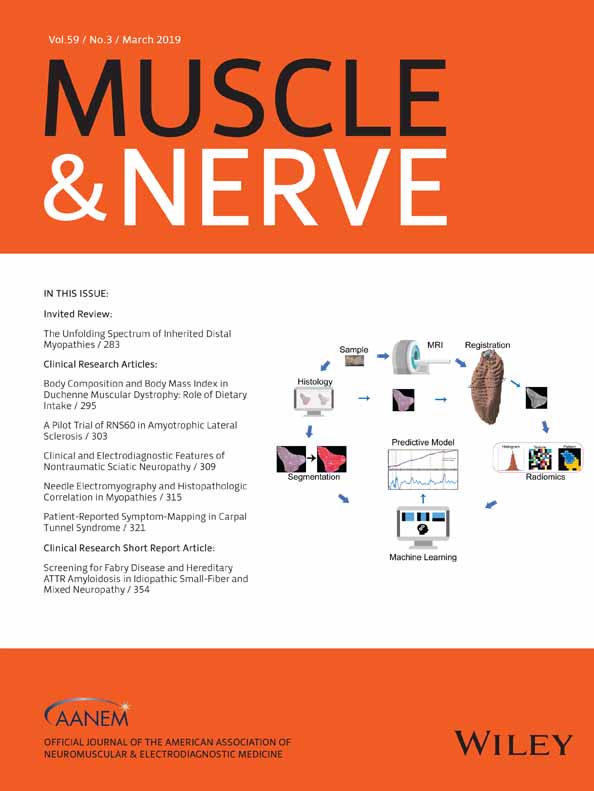Optimal needle placement for extensor hallucis longus muscle using ultrasound verification
ABSTRACT
Introduction: The extensor hallucis longus (EHL) muscle is important for diagnosis of neurologic lesions. It is also a target muscle for treatment. We investigated EHL with ultrasonography to determine optimal needle placement for safety and accuracy. Methods: A total of 96 legs of 48 healthy volunteers were examined through ultrasonography. Four published electromyographic methods for finding the EHL were assessed. We identified the midpoint of EHL (MD) using landmarks to determine optimal needle placement. Results: Mean values of bimalleolar line-MD on skin (MD-S) and tibial crest-MD-S were 10.5 ± 1.2 cm and 3.6 ± 0.4 cm, respectively. The depth of MD was 1.6 ± 0.2 cm. According to 4 EMG methods, the probability of needle penetrating EHL was 13% to 79% and that of needle penetrating the neurovascular bundle was 50% to 89%. Conclusions: Using ultrasonography, we could determine optimal needle placement in the EHL. Muscle Nerve 59:331–336, 2019




